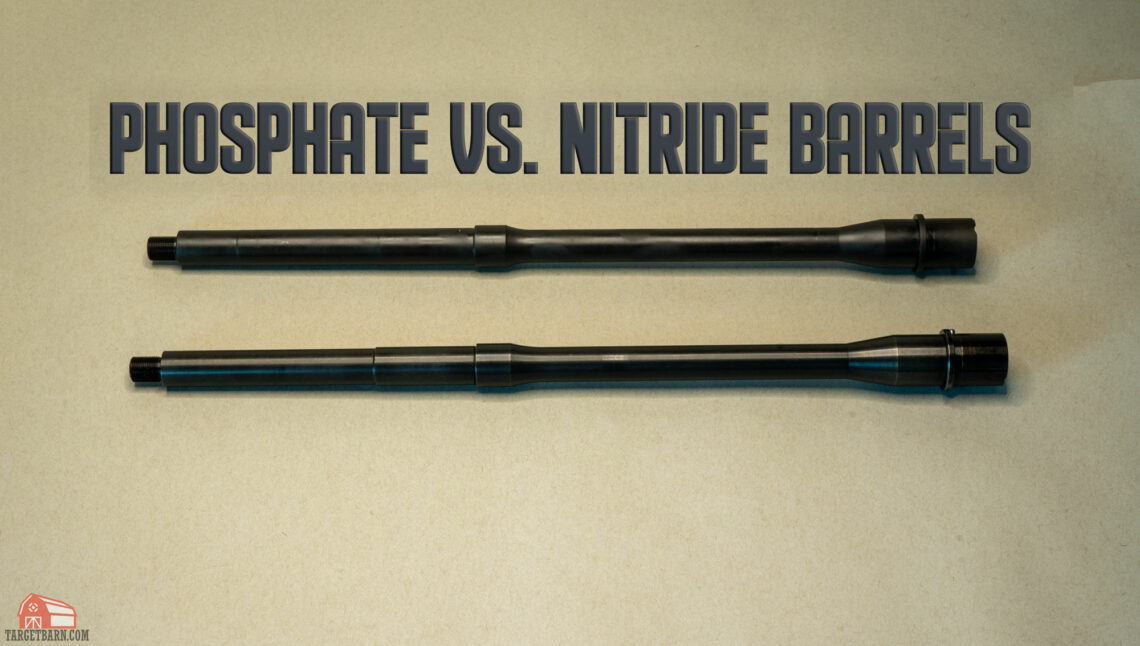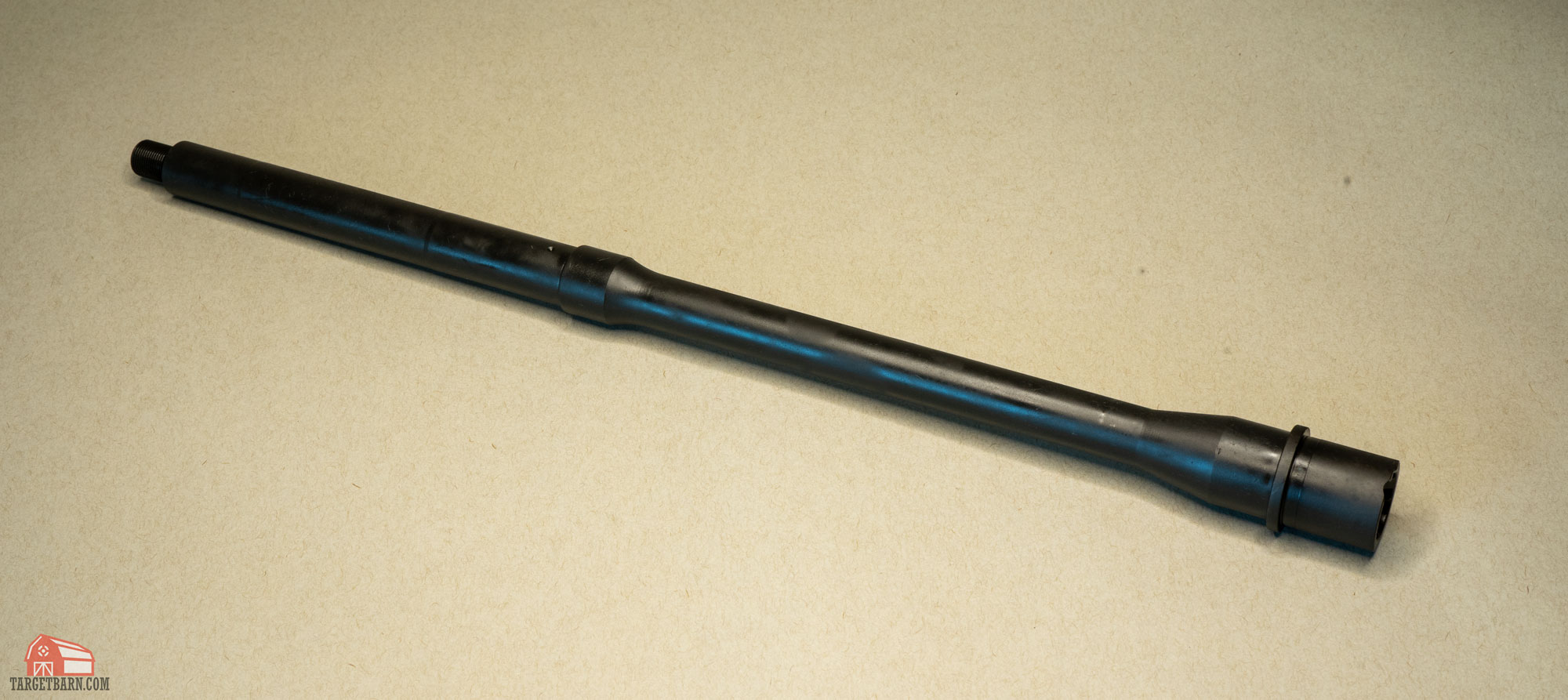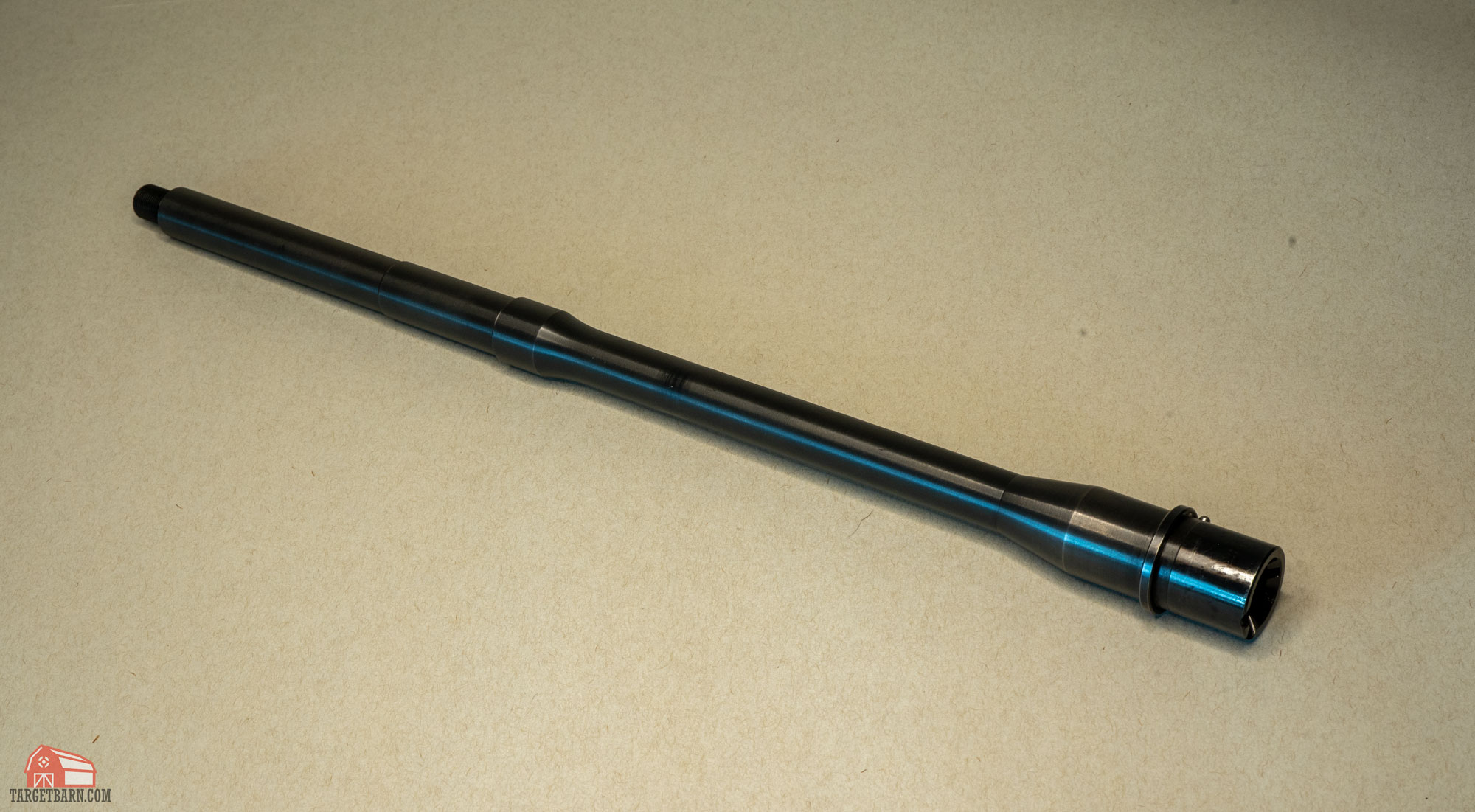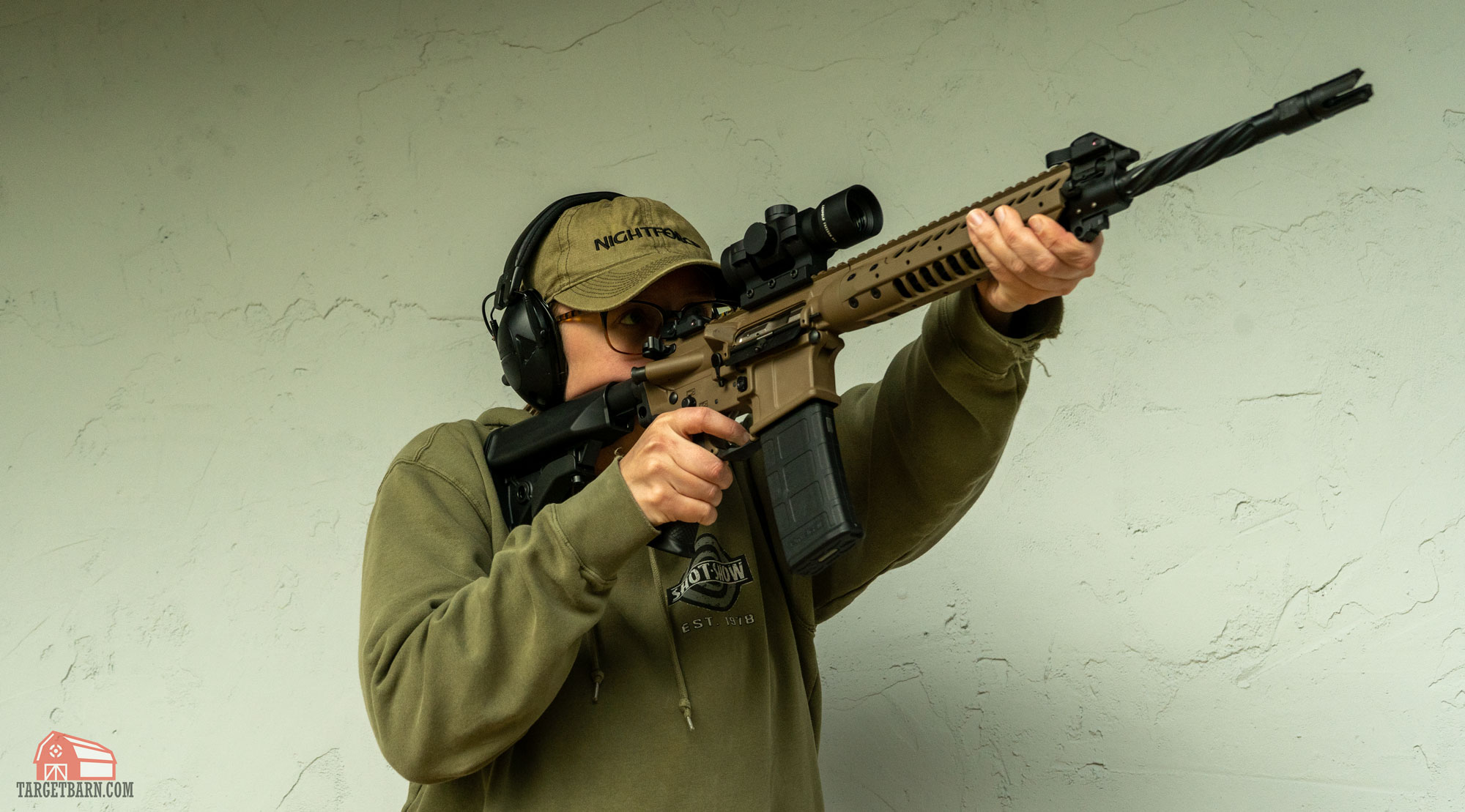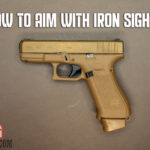When you’re building an AR, picking a barrel presents a dizzying array of choices, especially for the first timer. Everything from length to the coating on the barrel is a choice, and it can get pretty confusing. Today we’re going to take a look at two common barrel coating options: phosphate vs nitride.
Phosphate vs. Nitride Barrels: Why Coat?
Before we go into detail about phosphate coatings vs nitride on AR barrels, let’s take a look at why you’d even coat your barrel in the first place. Leaving an AR barrel “in the white” or uncoated exposes the steel to the elements and to possible damage. A coating will protect the barrel and make sure the rifle lasts longer.
Phosphate Barrels
Phosphate coating gun parts has been around for a long time. It’s likely you’ve heard of it referred to before, as parkerizing. Modern phosphate coated barrels use a manganese phosphate that is sprayed on the exterior of the barrel. You can also apply it via an immersive salt bath. These coatings are porous and absorb oil and lubrication well by design. When used in conjunction with quality external oils, a phosphate coating will protect the external of the barrel from corrosion. But, you must lubricate phosphate finishes regularly to give that protection. Phosphate coated barrels are coated on the outside; the inside of the barrel is usually chrome-lined.
Nitride Barrels
Nitriding a barrel is a different process; it’s actually a form of hardening. For firearms parts, nitriding is applied by submerging the part in a cyanide salt bath that’s heated to insane temperatures. You can apply nitride to most steel parts, including stainless steel and chro-moly barrels. Properly applied, a nitride finish will increase a barrel’s hardness.
Phosphate vs. Nitride Barrels: Which is Better?
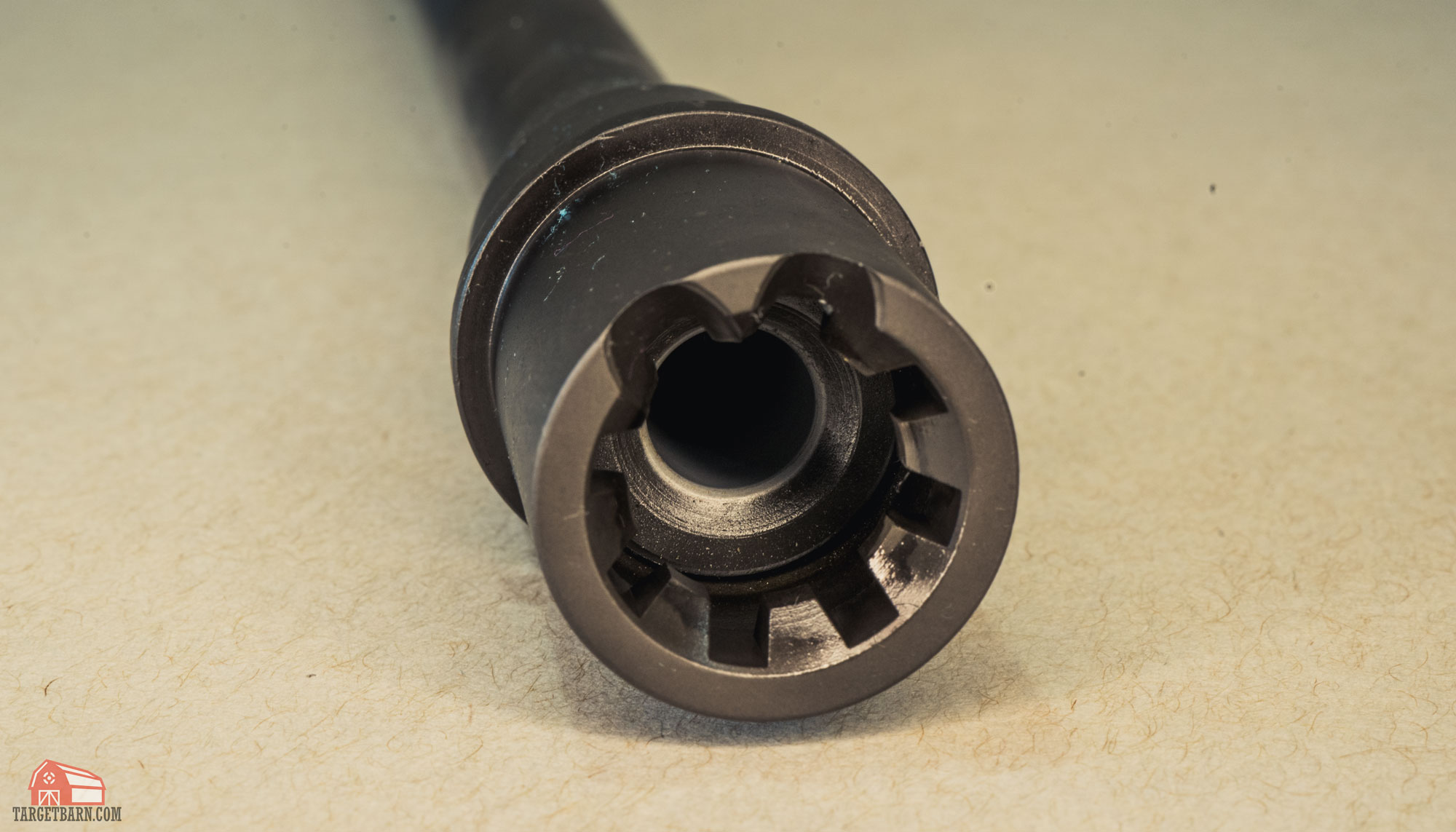
One of the advantages of nitride finishes is that you apply them to the exterior and interior of the barrel. This eliminates the need for chrome lining, because the inside of the barrel has been hardened by the nitriding process. Nitride finishes increase the lubricity of the part that has been coated, which reduces the need for external lubrication. For most shooters, a nitride barrel offers the best balance of performance and cost-effectiveness.
Durability
If nitriding protects the barrel better than a phosphate finish, are there any reasons to choose a phosphate coated barrel? Yes. Most barrels with phosphate coated exteriors have chrome-lined interiors. This is more durable during extreme full auto firing. If your use case is regular semi-auto fire, a nitride coated barrel vs a phosphate coated/chrome lined barrel is pretty much a wash in terms of durability.
Cost
Cost is one of the advantages to choosing a nitride coated barrel over a phosphate/chrome-lined barrel. Chrome-lining is an additive process; meaning that it actually adds physical material to the barrel. Nitriding is a chemical process, which means one important thing: it’s more affordable. Since it gives up very little to chrome lining in terms of durability, nitrided barrels make a lot of sense for building on a budget.
Accuracy
Nitride barrels will also have a slight edge in accuracy over chrome-lined barrels. The nitriding process doesn’t add material, so the chamber dimensions stay consistent. Having said that, if you’re building the ultimate AR carbine, or perhaps you’re an SOT constructing a full auto for a gun range rental, a phosphate coated, chrome-lined barrel is going to be the best choice. As mentioned, chrome-lining is better for sustained full automatic fire. That is why when the Marine Corps replaced all their M249s with HK416s, HK chrome lined the barrels.
Phosphate vs. Nitride Barrels: The Bottom Line
Ultimately, the decision between nitriding and phosphate finishes are less about the exterior of the gun and more about what you’re going to do with it. A nitride exterior will protect the barrel longer than a phosphate exterior finish. However, a chrome-lined, or phosphate, barrel will hold up better to sustained fire than a nitride interior. Nitride has a slight edge in accuracy and price. However, phosphate coated/chrome lined barrels are more common.
For the last word though, I’ll turn to the experts at Faxon Firearms and their thoughts on nitride barrels: “Nitride is a fantastic option. To us, it’s the ideal blend of performance, accuracy, and practicality for shooters.”

